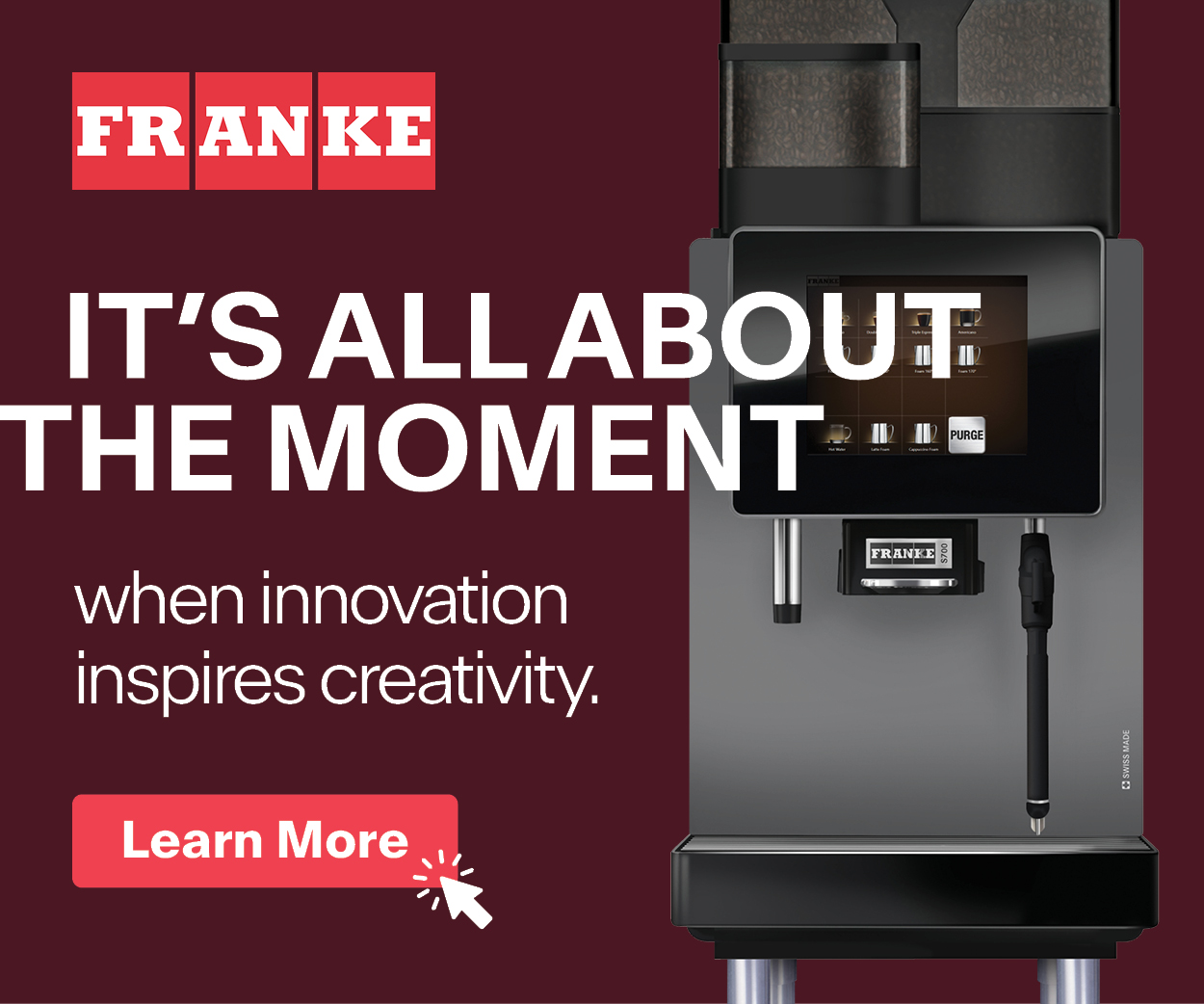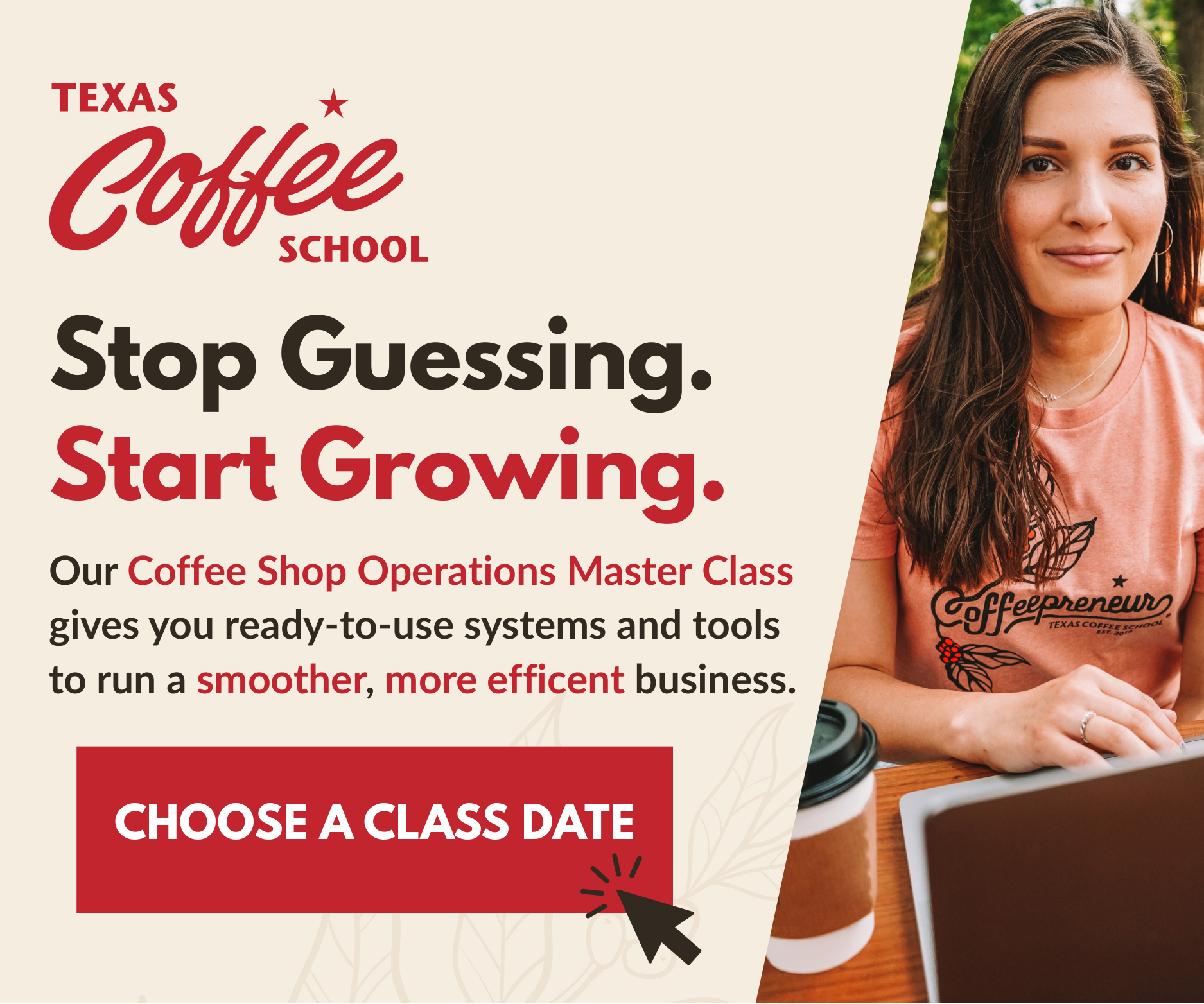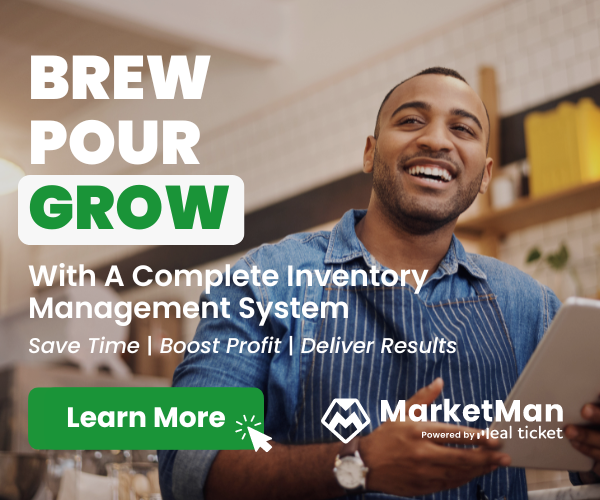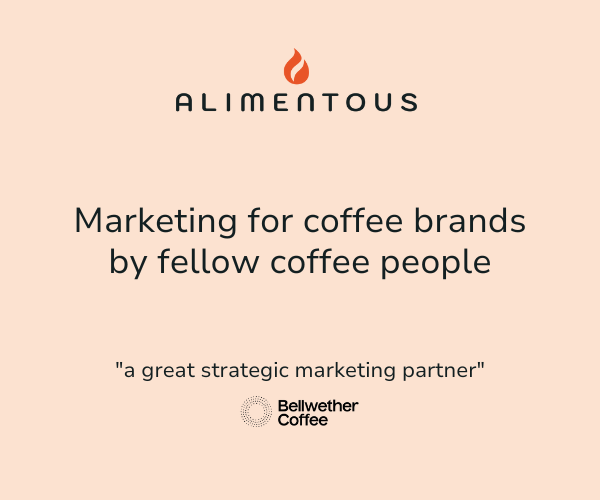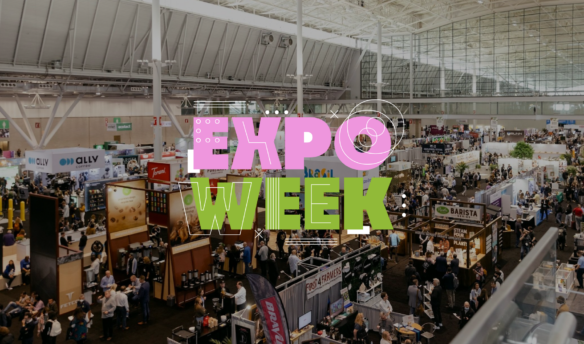The George R. Brown Convention Center in Houston played host to the 2025 Specialty Coffee Expo last weekend, drawing tens of thousands of coffee professionals from around the world.
Just a few weeks ago, we found out that this would be the last Specialty Coffee Expo—or at least, the last trade show with that name. Next year, Expo is getting a rebrand and falling under the World of Coffee umbrella, a series of global trade shows hosted by the Specialty Coffee Association. This marked the end of an era for the industry’s largest North American gathering.
I spent three days at Expo, navigating all the booths and exhibits, trying to get a sense of what ideas represented coffee right now, in 2025. I talked to a lot of people and joined myriad conversations, and certain themes emerged consistently across booths, presentations, and after-hours events. It was surprising to see how fascinated—and sometimes anxious—people were about the same looming concepts and concerns.
The industry appears to be at a significant inflection point, facing both serious challenges and embracing new technological possibilities. Here are the key trends and discussions that dominated this year’s show, the conversations that reveal where specialty coffee stands in 2025.
Anxiety Around Tariffs and Travel Is High
The current geopolitical landscape casted a long shadow over Expo this year. Many conversations revealed an industry grappling with the United States’ current economic nationalism, and a great bit of uncertainty around how to navigate tariffs and other forms of protectionism.
Vendors that produce goods like paper cups and coffee bags expressed concerns over how tariffs on Chinese imports, where many get their products, would impact their business. Chinese imports are currently facing a 145% import tax rate, but tariff anxieties didn’t end there. Several Canadian businesses expressed uncertainty about how they’ll be able to continue doing business with U.S. partners if the government reignites restrictions on market access.
Some folks are exploring transparent pricing mechanisms, with several companies saying they are considering adding explicit messaging on invoices, like a tariff markup line, as a way to build trust and show how tariffs contribute to (likely) higher prices for products. In a way, the tariff line item is almost like a reckoning and a promise to consumers: it’s like saying, “We wouldn’t raise the prices if we didn’t have to, and we’ll eliminate these surcharges once tariffs go away.”
It was evident that international attendees were anxious about traveling to the U.S. Attendees from Mexico, Honduras, Canada, and Germany all said that they knew people who opted out of going to Expo due to border concerns and fear of being detailed by the U.S. Immigration and Customs Enforcement. The potential loss of global relationships and cross-cultural knowledge exchange undermines the very purpose of international coffee events, creating a troubling dynamic for an industry built on international relationships.
We’ve Crossed An Automation Threshold
It seems many have passed the point of skepticism threshold when it comes to automation. The industry that built its identity on handcrafted authenticity and artisanal processes has quietly abandoned its resistance to technological efficiency.
Automation has transitioned from a grudgingly accepted necessity to a central value proposition, even for tools most emblematic of coffee craft—espresso machines, grinders, and roasters.
The lines between barista craft and automation-driven efficiency were fuzzier than ever while walking between booths of espresso machine manufacturers known for hands-on craft, like La Marzocco and San Remo, and others known for automation and efficiency, like Franke and Eversys.
Virtually every grinder manufacturer showcased new gear with grind-by-weight functionality. The Onyx Coffee Lab booth sported a Wingman Cobot robotic arm making coffee. And roasters that can automatically follow a roast profile? That’s just table stakes now.
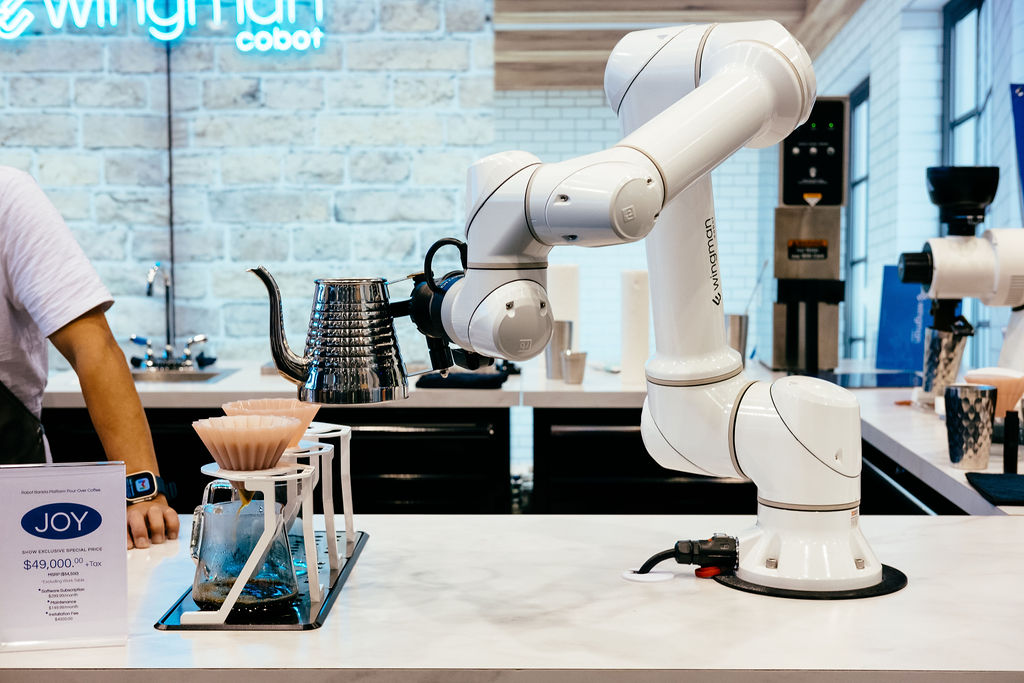
Plant-Based Milks Continue to Evolve
As always, there were new and novel plant-based milks to try. Move over oat!
Maizly’s corn milk caught my attention for its unopinionated flavor and texture. Had nobody told me it was corn milk, I would have assumed it was dairy. Hacco’s koji milk (made from koji, a Japanese fermented rice), on the other hand, had a distinct sweetness that worked well in coffee and matcha drinks.
These products represent competing approaches to the alternative milk question: should plant milks aim to emulate dairy milk, or actively contribute to the beverage experience with their own distinct flavors?
Despite these innovations, oat milk remains dominant (we were just kidding before), though there are anecdotal signs that consumers may be experiencing oat milk fatigue. Multiple coffee shop leaders said they see sales temporarily surge when they introduce new plant-based milks, suggesting consumers are still interested in novel experiences.
Everyone Wants to Roast Coffee (And Now They Can)
It was impossible to miss just how many booths had teeny-tiny roasters, many small enough to fit on a countertop like any regular household appliance—Daily Coffee News even did a whole article about how many brands had small roasters at their booths at Expo.
While smaller, tech-forward roasters the Aillio Bullet have been around for several years (brands like Ikawa have been around for even longer), there was no shortage of manufacturers debuting small roasters, ostensibly trying to woo retailers who want to roast. We saw small small roasters like the Bellwether’s Shop Roaster, Coffee Crafters’ Valentina 8, Attila’s 2kg roaster, Air-Motion’s 3kg roaster, the RoasTronix S7Pro.
This reinforces what we’ve already been seeing in our RoasterLink and Welcome Box programs. When we talk to new cafes owners, from day one, many say they have their eye on roasting in the future—or at least having coffee with their own branding on it. People want to own their brand and maintain as much control over their coffee as they can. Equipment has clearly caught up with this new dynamic.
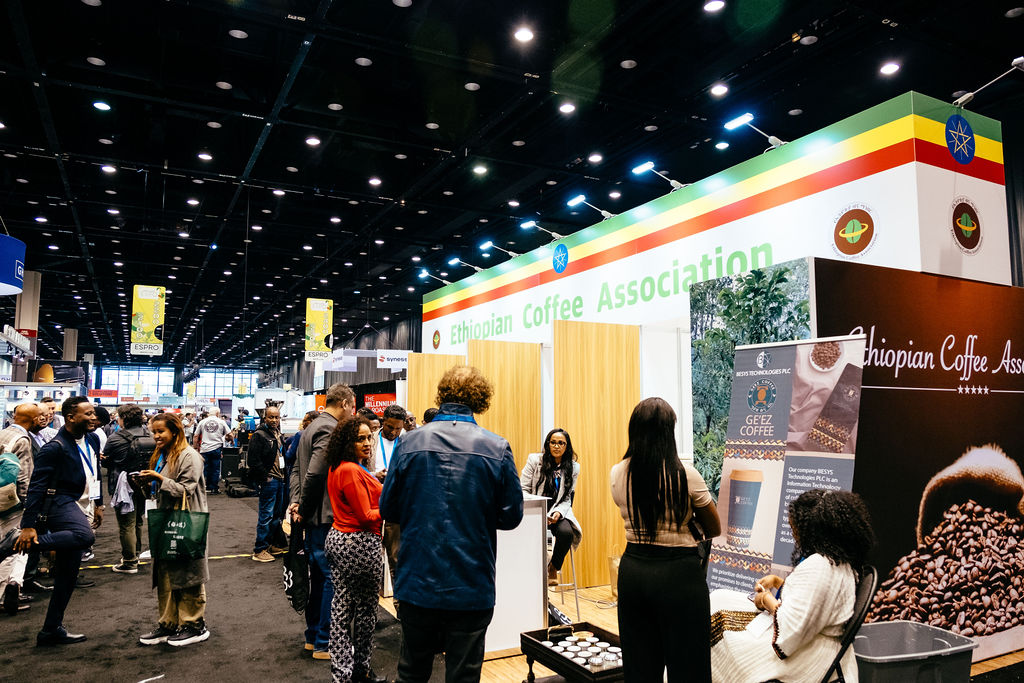
SCA Takes Over Q Grader Program—And Leaves Everyone With Questions
Just before Expo, the Specialty Coffee Association announced that they’re taking over the Q Grader program from the Coffee Quality Institute and integrating it into the organization’s Coffee Value Assessment (CVA) tool.
The CVA framework was released in mid-2024 as the spiritual successor to the longstanding SCA cupping form. The SCA argued that the CVA would give coffee evaluators more holistic tools to grade quality versus the old 1-100 point scoring system. Posters and ads for the announcement were omnipresent at the event—the SCA clearly wanted to make sure you didn’t miss the news.
I heard a range of opinions on the change, but the dominant mood was one of skepticism. People were confused about why this was happening, what it meant for the industry and whether the CVA program is ready for prime time, so to speak. This was one of the most controversial elements of this year’s show, and we’ll certainly be digging deeper into the topic at Fresh Cup.
The Co-Fermentation Debate Is Finally Cooling Down
Last year when I went to Expo, it felt like everyone was talking about co-fermented coffees. Unlike last year, where co-fermentation debates dominated conversations, this year it felt like people have largely accepted these coffees as part of the industry.
People generally agree that as long as co-fermented coffees are clearly labeled, there’s room for them in the market. The controversy has mostly settled.
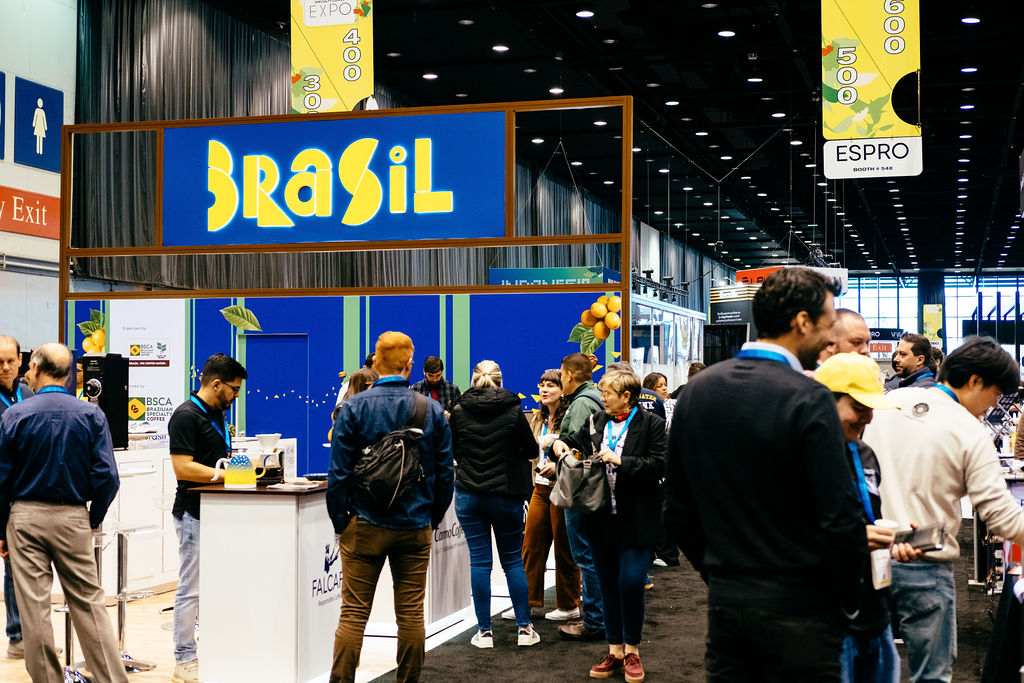
Coffee Carts Are Having a Moment
A lot of booths targeted their marketing to people with coffee carts or pop-ups, which makes sense: mobile coffee operations are popular. But some of the booths made me do a double take because they weren’t things I normally associate with coffee carts. Think large-scale cold brew coffee equipment, liquid matcha concentrates, and beverage dispensers attached to undercounter jugs.
This aligns with a macro trend we’ve seen unfold over the last few years. As commercial real estate costs continue to rise, the coffee cart has evolved from temporary stepping stone to legitimate business endpoint.
This shift has even spawned its own ecosystem, complete with dedicated influencers and entrepreneurial coaches focused exclusively on the mobile business model. Everything points toward coffee carts being the more accessible entry point into the industry, and many are finding success without ever needing to build out a full brick-and-mortar location.
The Traditional Espresso Machine Has Competition
There’s no shortage of people trying to figure out how to transform, or even replace, espresso machines. I saw so many concentrate products, like those from BKON (Coldstretto) and Pragmatic Beverage, positioning themselves not just as cold brew alternatives, but as complete espresso machine replacements.
The argument goes that an espresso machine is expensive, and training folks how to use a machine is difficult. For folks who operate carts, run restaurants or really any low-volume business that still wants to offer espresso, a pre-made concentrate might be a better option.
Still, others indicate the future of espresso isn’t about replacement, but enhancement. Houston’s own BlendIn Coffee Club did something really interesting at Expo: they aerated espresso through a Latte Art Factory machine, which is usually used to aerate milk for drinks like lattes and cappuccinos.
I got to try an espresso, and it was surprisingly sweet, with less of the punchy acidity you typically associate with espresso.
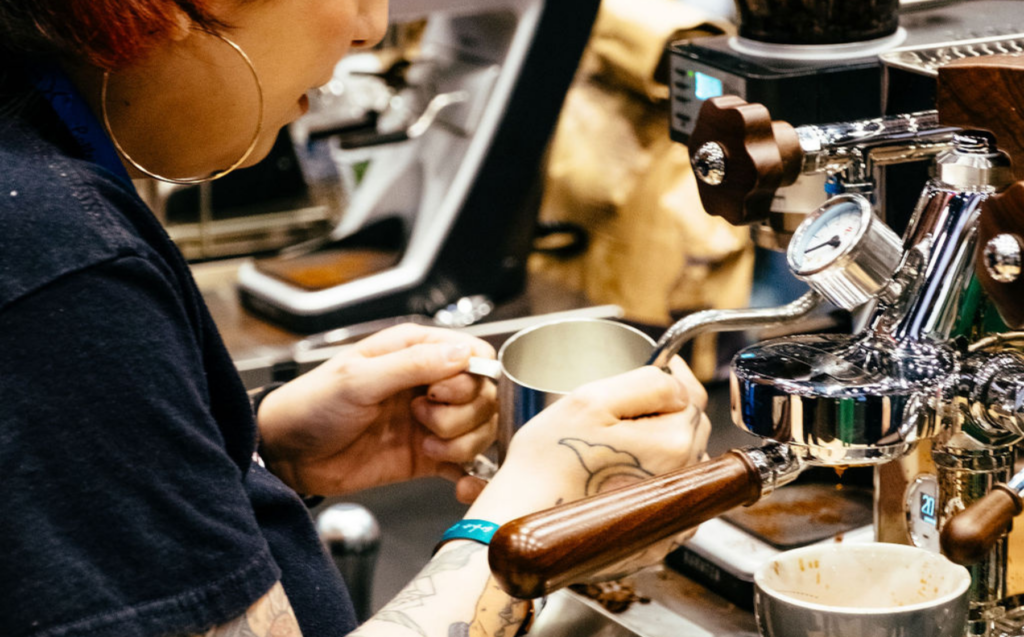
What It All Means
The trends at this final Specialty Coffee Expo point to an industry evolving beyond its craft origins toward more accessible, technology-driven models. Tomorrow’s winners will likely be those who embrace automation, adaptability, and new business formats while maintaining quality.
As the expo itself transforms into World of Coffee next year, the industry appears to be following suit—less romantic about tradition, more pragmatic about finding new paths to profitability.
All photos by Jenn Chen.








